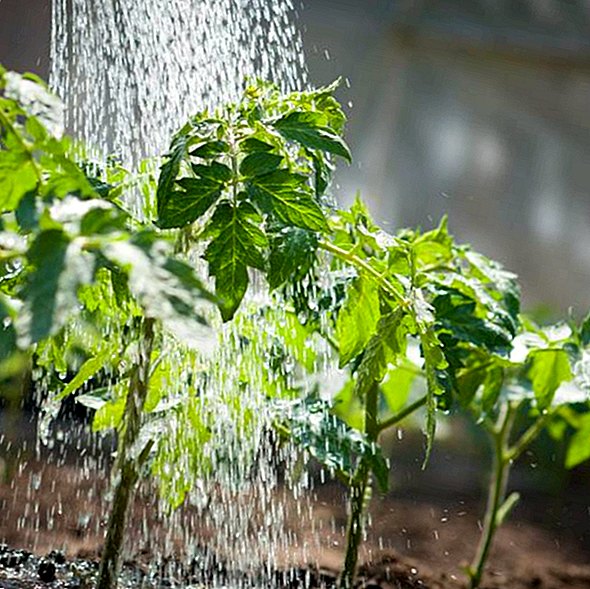Pour tomatoes: You have to pay attention!

Pour tomatoes: rainwater or tap water?
- Outdoor tomato plants automatically get rainwater. Rainwater is also the most natural form of irrigation for the plants because rainwater contains much less lime and is also softer than tap water.
- You can get one for watering the tomato plants Create rain barrelin which you collect the water and thus have always ready for pouring. This storage warms the rainwater over the sun before pouring, so that the plants do not suffer from cold shock.
Pour tomatoes: 3 important tips for tap water!
- Stale water is to be preferred
- Heat water before pouring / do not use ice-cold water
- Ideally, descale the water in advance
Pour tomatoes: When should I water?
- When pouring the tomato plants plays the Time a fundamental role, As it is important to ensure that the leaves are as little as possible in contact with water during irrigation, no time is available for lunch and late in the evening.
- At noon could the Sun the water drops on the leaves so dry up that the leaves burn. In the evening, on the other hand, the leaves can not dry properly due to lack of sun, which can lead to diseases.
- You ask yourself: when should I pour tomato plants? Best in the morning! Just cool water is tolerated by the plants in the morning rather than later in the day. In addition, there is no strong sunlight, but seen over the day still enough time to dry.
Pour tomatoes: How much?
On a warm day, tomato plants need about one half to two liters of water, Especially after planting you should definitely pay attention to a sufficient water supply. Half a liter should be enough.
Depending on the type of tomato, the amount may vary, but you can refer to the following Orient guide valuesas soon as the first fruits have ripened.
The amount of water per fruit is increased:
- Small tomato varieties: up to 100 ml
- Medium tomato varieties: up to 200 ml
- Large tomato varieties: to 300 ml
Pour tomatoes: How often?
It's hard to give a blanket answer here. Tomatoes in the field require less water than plants in the greenhouse. Depending on Variety and number of fruits However, adequate irrigation is essential.
The following tips serve as an orientation for irrigation:
- Continuous irrigation important (no long breaks)
- Never let plants dry out
- Do not pour after rain
- Water intensified on hot days
Pour tomatoes: In the greenhouse
- Tomato plants in the greenhouse can be better control, but also need more water, With the so-called thumb test, you should regularly check whether the water requirement of the plants is covered. To do this you put one finger in the ground about one to two centimeters before casting. If the soil is dry, there is an urgent need for irrigation.
- For one continuous supply with water you can take PET bottles or small pots in support. You can put a bottle (0.5 liter) upside down in the ground, so that the water reaches the plants evenly. Likewise, small pots are suitable, which you fasten diagonally beside the tomatoes, so that the roots are supplied by the bottom holes.
Pour tomatoes: in a bucket
The pouring in the tub represents special requirements, The goal is the, Water roots completely while preventing waterlogging. But you can not allow openings at the bottom of the pot and alternatively one Set up a hole on the side and close with a dowel. Then you can remove the dowel before pouring and control the moisture and drain any dammed water.
You want to build a mini greenhouse yourself? It's that easy. In addition, we provide you with tips for lawn care in the spring. Now plant the balcony and summer can come.
Video tip: Build your own herb rack











